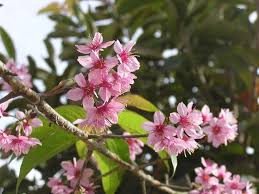
**Introduction to Rosa Gallica in Traditional Culture**
Rosa Gallica, known for its timeless beauty and delicate fragrance, holds a significant place in the cultural and traditional practices of various ethnicities and nations. In this section, we delve into the historical presence and symbolic meanings of Rosa Gallica in the rich tapestry of global cultures and traditions.
**1. Historical Roots of Rosa Gallica in Traditional Culture**
Rosa Gallica, also known as the French Rose or Gallic Rose, has a storied history dating back thousands of years. Its cultivation can be traced to ancient civilizations such as Egypt, Greece, and Rome, where it was revered for its beauty, fragrance, and medicinal properties. Over time, Rosa Gallica spread across Europe and beyond, becoming intertwined with the cultural identities and traditions of diverse peoples and nations.
**2. Rosa Gallica in European Culture and Tradition**
In European culture, Rosa Gallica has long been celebrated as a symbol of love, beauty, and romance. It holds a special place in folklore, literature, and art, where it is often depicted as a token of affection and passion. In medieval Europe, Rosa Gallica was associated with the Virgin Mary and the concept of divine love, symbolizing purity, devotion, and spiritual grace. Its vibrant blooms adorned cathedrals, palaces, and gardens, serving as a testament to the enduring power of love and beauty.
**3. Rosa Gallica in Middle Eastern and Asian Cultures**
In the Middle East and Asia, Rosa Gallica holds cultural significance as a symbol of hospitality, generosity, and prosperity. In countries such as Iran, Turkey, and India, Rosa Gallica petals are used to create fragrant rose water, which is sprinkled on guests as a gesture of welcome and goodwill. In addition to its use in rituals and ceremonies, Rosa Gallica is also prized for its medicinal properties in traditional medicine systems such as Ayurveda and Unani, where it is used to treat a variety of ailments and promote overall well-being.
**4. Rosa Gallica in Indigenous Cultures**
Indigenous cultures around the world have also incorporated Rosa Gallica into their traditional practices and ceremonies. In North America, for example, Native American tribes used Rosa Gallica petals in healing rituals and spiritual ceremonies, believing in their ability to purify the body, mind, and spirit. Similarly, Indigenous peoples in Australia, Africa, and South America have their own unique traditions and beliefs surrounding Rosa Gallica, using it as a symbol of strength, resilience, and connection to the natural world.
**5. Symbolic Meanings of Rosa Gallica in Traditional Culture**
Across different cultures and nations, Rosa Gallica carries a range of symbolic meanings and associations, including:
– **Love and Romance:** Rosa Gallica is often associated with love, romance, and passion, symbolizing the beauty and intensity of romantic relationships.
– **Spirituality and Devotion:** In religious and spiritual contexts, Rosa Gallica symbolizes purity, devotion, and divine love, representing the soul’s journey towards spiritual enlightenment.
– **Hospitality and Generosity:** Rosa Gallica is considered a symbol of hospitality and generosity in many cultures, where it is used to welcome guests and express goodwill towards others.
– **Healing and Well-being:** Rosa Gallica is revered for its medicinal properties in traditional medicine systems, where it is used to promote healing, balance, and overall well-being.
**Conclusion**
Rosa Gallica’s presence and significance in traditional culture reflect its enduring beauty and timeless appeal across diverse peoples and nations. Whether celebrated as a symbol of love and romance, spirituality and devotion, hospitality and generosity, or healing and well-being, Rosa Gallica continues to enrich the cultural landscape with its multifaceted symbolism and profound meaning. As we explore the cultural and traditional practices surrounding Rosa Gallica, we gain a deeper appreciation for its role in shaping human experiences and connecting us to the beauty and wonder of the natural world.
**Part 2: Rosa Gallica in Traditional Culture: Its Presence and Significance Across Different Peoples and Nations**
**Exploring the Presence and Meaning of Rosa Gallica in Various Cultures and Traditions**
In this section, we continue our exploration of Rosa Gallica’s role in traditional culture, delving deeper into its significance across different peoples and nations worldwide.
**6. Rosa Gallica in African Culture and Tradition**
In Africa, Rosa Gallica holds cultural significance as a symbol of beauty, fertility, and abundance. Across the continent, roses are prized for their vibrant colors and fragrant blooms, which are used in traditional ceremonies, celebrations, and rituals. In countries such as Morocco and Egypt, Rosa Gallica petals are woven into intricate floral arrangements and worn as adornments during weddings, festivals, and religious observances. The rose’s exquisite beauty and intoxicating fragrance symbolize love, prosperity, and the eternal cycle of life and renewal in African culture.
**7. Rosa Gallica in Indigenous Cultures of the Americas**
Indigenous peoples of the Americas have their own unique traditions and beliefs surrounding Rosa Gallica, which vary widely across different tribes and nations. In Native American cultures, roses are revered as sacred symbols of connection to the land, ancestors, and spiritual realms. Rosa Gallica petals are used in healing ceremonies, vision quests, and rites of passage, where they are believed to impart strength, protection, and guidance to those who seek them. The rose’s thorns are seen as symbols of resilience and protection, while its fragrant blossoms represent the beauty and abundance of the natural world.
**8. Rosa Gallica in Asian Traditions and Festivals**
In Asia, Rosa Gallica plays a prominent role in traditional customs, rituals, and festivals. In countries such as China, Japan, and Korea, roses are associated with love, prosperity, and good fortune, and are often featured in weddings, New Year celebrations, and other auspicious occasions. Rosa Gallica petals are used to create decorative garlands, floral offerings, and ceremonial teas, which are offered as symbols of respect, gratitude, and devotion. The rose’s delicate beauty and sweet fragrance bring joy and harmony to homes and communities across Asia, where it is cherished as a timeless symbol of elegance and grace.
**9. Rosa Gallica in Middle Eastern and Mediterranean Cultures**
In the Middle East and Mediterranean regions, Rosa Gallica has been revered for millennia as a symbol of beauty, love, and hospitality. In countries such as Turkey, Iran, and Greece, roses are an integral part of daily life, from culinary traditions to religious rituals. Rosa Gallica petals are used to flavor sweets, desserts, and beverages, adding a delicate floral note to traditional dishes such as Turkish delight, baklava, and rosewater syrup. In addition to its culinary uses, Rosa Gallica is also used in religious ceremonies, where it symbolizes purity, devotion, and spiritual enlightenment.
**10. Rosa Gallica in Modern Culture and Globalization**
In today’s interconnected world, Rosa Gallica continues to inspire artists, writers, and designers from diverse cultural backgrounds, who draw upon its timeless beauty and symbolism in their creative works. From fashion runways to art galleries, Rosa Gallica’s influence can be seen in a wide range of artistic expressions, where it serves as a source of inspiration and fascination for people of all ages and backgrounds. Through the power of globalization, Rosa Gallica has transcended geographical boundaries and cultural barriers to become a universal symbol of love, beauty, and the human spirit.
**Conclusion**
Rosa Gallica’s presence and significance in traditional culture are testament to its enduring beauty and timeless appeal across diverse peoples and nations. Whether celebrated in rituals and ceremonies, depicted in art and literature, or woven into the fabric of everyday life, Rosa Gallica continues to captivate and inspire people around the world with its exquisite beauty and profound symbolism. As we honor the cultural traditions and practices surrounding Rosa Gallica, we gain a deeper appreciation for its role in shaping human experiences and connecting us to the rich tapestry of global culture and heritage.










